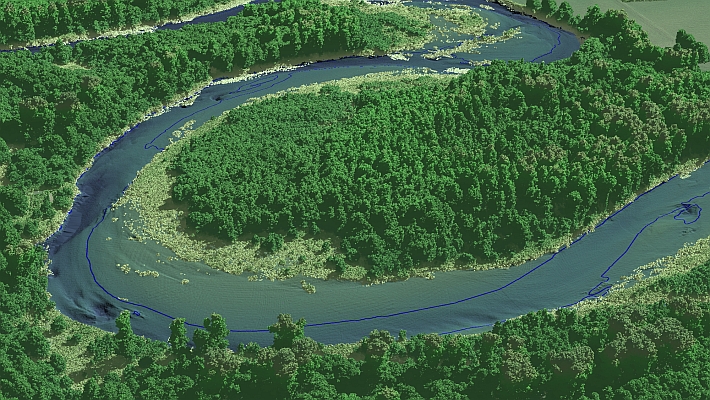Applanix announced that its POS MV position and orientation system technology will be working with nautical sensors aboard the U.S. Coast Guard icebreaker Healy, which left port in early August 2007 to map the sea floor off the Alaskan arctic coastline. The installed POS system will assist onboard marine echo sounder systems and other vessel sensors during bathometric mapping by accurately measuring sensor and ship positioning and orientation during data capture, even under the most demanding sea and ice conditions.
One of the main purposes of the mapping work, to be carried out aboard the Healy, is to determine the extent of the continental shelf north of Alaska. Along with environmental and geographic research goals, the data collected onboard the Healy will help register U.S. coastal boundary information with the U.N. Commission on the Limits of the Continental Shelf so that rights over the resources of the sea floor and subsurface (including oil and gas drilling rights) may be preserved.
By combining the dynamic accuracy of uninterrupted measurement of position, roll, pitch and true heading with the accuracy of Global Positioning System (GPS) positioning, the self-contained POS MV system works in conjunction with a variety of sensors, including echo sounders, LIDAR, multibeam sonar systems and others. If given the exact sensor position and orientation at the precise moment of data capture as a reference point, sonar data can be properly corrected and quickly processed to produce maps with far greater data pixel location accuracy.
“As the Polar Regions slowly thaw and the hunt for resources quickly turns north, the arctic territories are becoming a highly contested geopolitical concern,” said Peter Canter, Director of Marine Products for Applanix. “Precise, reliable arctic bathometric surveying data was once difficult to find outside of naval submariner circles. Now it is considered to be as essential for commercial growth as much as it ever was for defensive security. The harsh arctic motion dynamics produced by moving a survey ship through cold water and thick ice requires the most advanced sensor support technology for precise and accurate results, and that means POS MV.” Current laws grant countries an economic zone of 200 nautical miles beyond their land borders. This zone can be extended where a country can prove that the structure of the continental shelf is similar to the geological structure within its territory.
Representing the latest in state-of-the-art GPS-assisted inertial technology for maritime mobile mapping, POS MV is designed for use with multibeam sonar systems, enabling adherence to International Hydrographic Survey standards on sonar swath widths of greater than ± 75 degrees under all dynamic conditions. The 7-year-old Coast Guard ship Healy is one of the newest icebreakers serving the U.S. and one of the largest ever to carry an Applanix POS MV solution for bathometric mapping. Four hundred-twenty feet long and displacing 16,400 tons, the Healy is capable of breaking ice 8 feet thick. Its current Alaskan Arctic survey mission with the Applanix POS MV onboard is expected to span several months.
Source: Applanix






